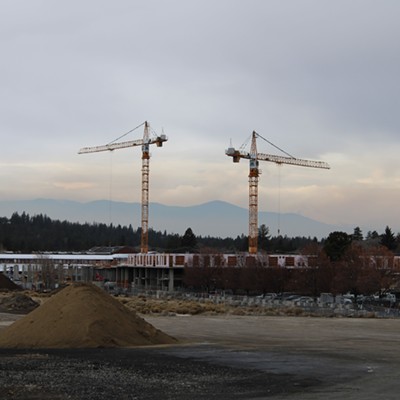Becky Johnson, vice president of Oregon State University-Cascades, says she wants to be a good neighbor. As the lead proponent for the university's expansion to a full-service, four-year college, that sentiment has placed her on the frontline with neighbors. And, since last April, the university has convened a board of community members the school calls the Campus Expansion Advisory Committee (CEAC), which has researched topics ranging from housing to traffic and parking around the school's planned expansion at Southwest Chandler Ave. and Southwest Century Drive.
The goal is to keep everyone happy. But that's a difficult task.
Over the past month, public discontent has coalesced in the form of a citizens' group called Truth in Site. Its main complaints center on what it sees as a potential glut of traffic on the westside and rowdy college students who might become neighbors. In late March, the Truth in Site group held a meeting at The Bend Armory and attracted about 200 area residents, either displeased with OSU-Cascades' current expansion plans or just curious enough to attend the gathering. Johnson was one of those in attendance.
That meeting also served as a platform for Truth in Site's leader, Scott Morgan, to launch two campaigns—one, a letter writing barrage that would have overwhelmed even Santa Claus, as the group sent dozens of grievances to city council (and the Source), and, two, an announcement that the group planned a legal challenge to OSU-Cascades' expansion at its planned site. At the meeting, the group leader said he hoped to collect $50,000 to mount a legal challenge. The group claimed to have already raised $10,000 that March evening.
But for all the huff and puff, it seems as if there's nothing to sue about at this stage in the process.
Paul Dewey, Central Oregon LandWatch's Executive Director, said Morgan's group approached him two weeks ago in relation to its possible legal challenge.
"They actually asked me to represent them—that's why they contacted me in the first place," Dewey, who founded the nonprofit land-use oversight group in 1985, said. "I said I couldn't."
LandWatch hasn't taken a stance on the university's siting plan, but the group "might on the master plan," Dewey said.
Truth in Site also approached Bill Bernardy, a member of CEAC's housing task force, about joining its ranks. He said he also declined.
On April 3, Morgan said Truth in Site would no longer be making comments to the media on advice from an attorney, leaving Bend residents in the dark regarding his group's future plans.
As an organizational tool, the group maintains a Facebook presence, posting photos and articles related to the school's proposed expansion. On March 17, a survey was posted to the Truth in Site page, giving seven options for siting the proposed university (even though OSU-Cascades has already purchased the 10-acre site). Those options include neutrally-labeled locations like "Juniper Ridge" and "Hooker Creek," but the group took poetic liberty with the purchased site on the westside, calling it the "Pumice Pit/Landfill."
When one commenter remarked that all the options should be listed more neutrally, the page's moderator accused her of libel. (Editor's note: That commenter works for the Source's sibling organization, Lay It Out Events.)
Explaining the university site-plan review process, Bend's city attorney Mary Winters said that if a hearings officer does approve OSU-Cascades' plan for the 10-acre lot, Truth in Site can make an appeal. To do so, the group would need to cite development code it believes the project would violate. However, that 10-acre parcel is currently zoned limited commercial, which allows a wide variety of use—anything from a grocery store to a school.
"What's going to be in front of a hearings officer—and if there's an appeal, in front of council—are the criteria for site-plan review," Winters said last week in her downtown office on city hall's second floor. "And that's really all they can consider, which has to do with parking and traffic. It's a permitted use, as are many other things."
Bottom line: Although the appeals process allows Truth in Site a slim avenue to pursue its challenge at this stage of process, it's likely a dead end.
Of course, there is still the potential rezoning of an adjacent 46-acre plot which OSU-Cascades plans to develop during a second phase of the campus development.
(To be continued?)

























